
Richard III was King of England from 26 June 1483 until his death in 1485. He was the last king of the Plantagenet dynasty and its cadet branch the House of York. His defeat and death at the Battle of Bosworth Field marked the end of the Middle Ages in England.

Henry VI was King of England from 1422 to 1461 and again from 1470 to 1471, and disputed King of France from 1422 to 1453. The only child of Henry V, he succeeded to the English throne upon his father's death at the age of eight months; he succeeded to the French throne on the death of his maternal grandfather, Charles VI, shortly afterwards.

Richard of York, 3rd Duke of York, also named Richard Plantagenet, was a leading English magnate and claimant to the throne during the Wars of the Roses. He was a member of the ruling House of Plantagenet by virtue of being a direct male-line descendant of Edmund of Langley, King Edward III's fourth surviving son. However, it was through his mother, Anne Mortimer, a descendant of Edward III's second surviving son, Lionel of Antwerp, that Richard inherited his strongest claim to the throne, as the opposing House of Lancaster was descended from John of Gaunt, Duke of Lancaster, the third surviving son of Edward III. He also inherited vast estates and served in various offices of state in Ireland, France and England, a country he ultimately governed as Lord Protector due to the mental instability of King Henry VI.
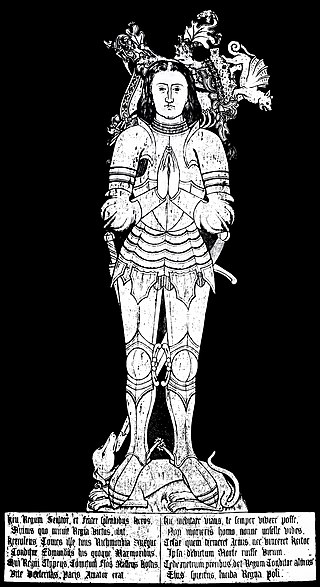
Edmund Tudor, 1st Earl of Richmond, also known as Edmund of Hadham, was the father of King Henry VII of England and a member of the Tudor family of Penmynydd. Born to Sir Owen Tudor and the dowager queen Catherine of Valois, Edmund was the half-brother of Henry VI of England. He was raised for several years by Katherine de la Pole and Henry took an interest in Edmund's upbringing, granting him a title and lands once he came of age. Both Edmund and his brother, Jasper, were made advisers to the King, as they were his closest remaining blood relatives.
Anne de Mortimer was a medieval English noblewoman who became an ancestor to the royal House of York, one of the parties in the fifteenth-century dynastic Wars of the Roses. It was her line of descent which gave the Yorkist dynasty its claim to the throne. Anne was the mother of Richard, Duke of York, and thus grandmother of kings Edward IV and Richard III, and great-grandmother of Edward V.

Humphrey Stafford, 1st Duke of Buckingham, 6th Earl of Stafford, 7th Baron Stafford, of Stafford Castle in Staffordshire, was an English nobleman and a military commander in the Hundred Years' War and the Wars of the Roses. Through his mother he had royal descent from King Edward III, his great-grandfather, and from his father, he inherited, at an early age, the earldom of Stafford. By his marriage to a daughter of Ralph, Earl of Westmorland, Humphrey was related to the powerful Neville family and to many of the leading aristocratic houses of the time. He joined the English campaign in France with King Henry V in 1420 and following Henry V's death two years later he became a councillor for the new king, the nine-month-old Henry VI. Stafford acted as a peacemaker during the partisan, factional politics of the 1430s, when Humphrey, Duke of Gloucester, vied with Cardinal Beaufort for political supremacy. Stafford also took part in the eventual arrest of Gloucester in 1447.

Jack Cade's Rebellion was a popular revolt in 1450 against the government of England, which took place in the south-east of the country between the months of April and July. It stemmed from local grievances regarding the corruption, maladministration and abuse of power of the king's closest advisors and local officials, as well as recent military losses in France during the Hundred Years' War. Leading an army of men from south-eastern England, the rebellion's leader Jack Cade marched on London in order to force the government to reform the administration and remove from power the "traitors" deemed responsible for bad governance. Apart from the Cornish rebellion of 1497, it was the largest popular uprising to take place in England during the 15th century.
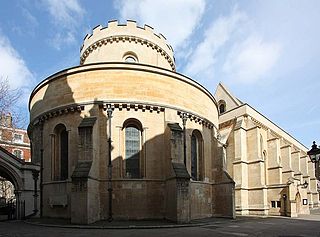
The Temple Church, a royal peculiar in the Church of England, is a church in the City of London located between Fleet Street and the River Thames, built by the Knights Templar for their English headquarters in the Temple precinct. It was consecrated on 10 February 1185 by Patriarch Heraclius of Jerusalem. During the reign of King John (1199–1216) it served as the royal treasury, supported by the role of the Knights Templar as proto-international bankers. It is now jointly owned by the Inner Temple and Middle Temple Inns of Court, bases of the English legal profession. It is famous for being a round church, a common design feature for Knights Templar churches, and for its 13th- and 14th-century stone effigies. It was heavily damaged by German bombing during World War II and has since been greatly restored and rebuilt.

Hugh Emrys Griffith was a Welsh actor. Described by BFI Screenonline as a "wild-eyed, formidable character player", Griffith appeared in over 100 theatre, film, and television productions in a career that spanned over 40 years. He was the second-ever Welsh-born actor to win an Academy Award, winning a Best Supporting Actor Oscar for his role in Ben-Hur (1959), with an additional nomination for Tom Jones (1963).
Sir Richard Charles Hastings Eyre is an English film, theatre, television and opera director. Eyre has received numerous accolades including three Laurence Olivier Awards as well as nominations for six BAFTA Awards and two Tony Awards. He was appointed a Commander of the Order of the British Empire (CBE) in the 1992 News Year Honours, and knighted in the 1997 New Year Honours.
The Percy–Neville feud was a series of skirmishes, raids, and vandalism between two prominent northern English families, the House of Percy and the House of Neville, and their followers, that helped provoke the Wars of the Roses. The original reason for the long dispute is unknown, and the first outbreaks of violence were in the 1450s, prior to the Wars of the Roses. The antagonists would later meet in battle several times during the feud.
The Dean of the Chapel Royal, in any kingdom, can be the title of an official charged with oversight of that kingdom's chapel royal, the ecclesiastical establishment which is part of the royal household and ministers to it.

Richard Thomas Griffiths was an English actor. He was known for his portrayals of Vernon Dursley in the Harry Potter films (2001–2010), Uncle Monty in Withnail and I (1987), and Henry Crabbe in Pie in the Sky (1994–1997). Over his career he received numerous accolades including a Tony Award and Olivier Award as well as a nomination for a BAFTA Award. He was appointed an Officer of the Order of the British Empire (OBE) by Queen Elizabeth II in 2008.
Derek Griffiths is a British actor, singer and voice artist who appeared in numerous British children's television series in the 1970s to present and has more recently played parts in television drama.

Major Francis Charles Claydon Yeats-Brown, DFC was an officer in the British Indian army and the author of the memoir The Lives of a Bengal Lancer, for which he was awarded the 1930 James Tait Black Memorial Prize.
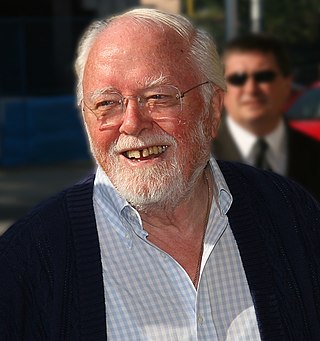
Richard Samuel Attenborough, Baron Attenborough, was an English actor, film director, and producer.
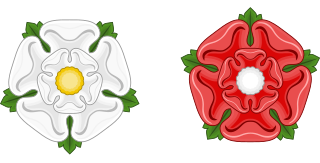
The First Battle of St Albans took place on 22 May, 1455, at St Albans, 22 miles (35 km) north of London, and traditionally marks the beginning of the Wars of the Roses in England. Richard, Duke of York, and his allies, the Neville Earls of Salisbury and Warwick, defeated a royal army commanded by Edmund Beaufort, Duke of Somerset. Unusually, the battle was contested in the town of St Albans itself, with the bulk of the fighting taking place in the streets and a tavern being used as a redoubt. Somerset was killed in the battle, and King Henry VI captured, clearing the way for a subsequent parliament to appoint Richard of York Lord Protector.
Eva Griffith, also credited as Eva Griffiths, is a British actress, and a historian of the English Renaissance theatre. She began her career as child actress.

John Beaumont, 1st Viscount Beaumont, was an English nobleman and magnate from Folkingham, Lincolnshire. He was a councillor to King Henry VI and was rewarded for his services, becoming a leading member of the East Anglian nobility. Beaumont held numerous offices for the crown, and was promoted up the peerage to become the first man with the rank of viscount. He also amassed immense personal wealth, acquired through inheritance, marriage, and royal patronage.
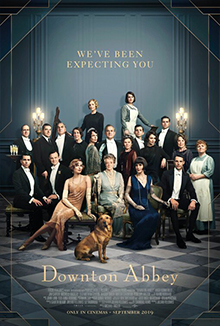
Downton Abbey is a 2019 historical drama film directed by Michael Engler from a screenplay by Julian Fellowes, based on the television series of the same name created by Fellowes. The film continues the storyline from the series, with much of the original cast returning. Set in 1927, it depicts a royal visit to the Crawley family's stately home in Yorkshire. As royal staff members descend on Downton, an assassin has also arrived and attempts to kill the monarch.













